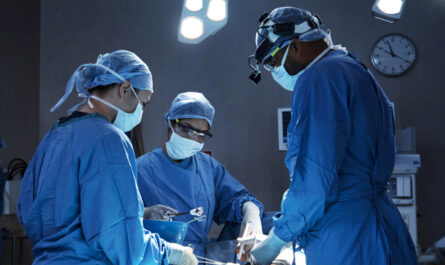
What are Defibrillators?
Defibrillators are life-saving medical devices used to treat cardiac arrest – a condition where the heart suddenly stops beating normally. When this happens, the heart cannot pump blood to the brain, lungs and other vital organs. Delivery of an electrical shock through a defibrillator can shock the heart back into a normal heart rhythm and restore the blood circulation.
Types of Defibrillators
There are primarily two main types of defibrillators – Implantable Cardioverter Defibrillators (ICDs) and External Defibrillators (EDs).
Implantable Cardioverter Defibrillators (ICDs)
ICDs are small, battery-powered medical devices that are implanted surgically in the chest cavity just below the clavicle. They continuously monitor the heart’s rhythm for any abnormalities and can deliver a shock to restore a normal rhythm when required. ICDs are recommended for patients who have already experienced cardiac arrest or ventricular tachycardia – a dangerous, fast heart rhythm that can quickly devolve into cardiac arrest. They work as an automatic external defibrillator but are placed inside the body during minor surgery.
External Defibrillators (EDs)
External defibrillators are devices used for emergency situations. They are portable and easy to use by first responders, emergency medical technicians as well as bystanders if trained in cardiopulmonary resuscitation (CPR). EDs can be manual, where the rescuer analyses the heart rhythm and decides if defibrillation is required or they can be AEDs – automated external defibrillators that asses the heart rhythm through voice prompts or visual displays and advise the rescuer if a shock is needed. AEDs are considered safe for public access and use simple audio and visual prompts to guide users through the rescue process.
How do Defibrillators work?
Defibrillation uses electrical therapy to treat life threatening cardiac arrhythmias, especially ventricular fibrillation and pulseless ventricular tachycardia. During normal sinus rhythm, the electrical impulses caused by the sinoatrial node make the heart contract in an organized way. However, in cardiac arrest the ventricles start beating rapidly (ventricular tachycardia) or irregularly (ventricular fibrillation) which means they quiver uselessly instead of pumping blood.
Defibrillators work by delivering a therapeutic shock through the chest wall and heart. This depolarizes a critical mass of the heart muscle and terminates the arrhythmia, allowing the natural pacemaker in the heart (sinus node) to reassert control over the regular rhythm. The shock causes most of the heart muscle cells to repolarize at the same time, enabling the heart’s natural pacemaker to reestablish a coordinated rhythm.
Effectiveness of Defibrillation
For ventricular fibrillation, defibrillation within the first few minutes of cardiac arrest can be up to 75-95% effective in restoring the heart’s normal rhythm depending on the patient’s age and health status. However, the patient’s chances of survival decrease by 10% for every minute without defibrillation. Healthcare guidelines recommend automated external defibrillators (AEDs) should be used as soon as possible when emergency medical services or first responders arrive on scene of a cardiac arrest. Early CPR along with early defibrillation is vital for the best chance of survival after sudden cardiac arrest.
Wider Use of Public Access Defibrillators
Public access defibrillation aims to increase the chances of survival from sudden cardiac arrest by making automated external defibrillators (AEDs) more widely available in public places. Considering that cardiac arrests often occur in public locations away from emergency medical services, integrating AEDs in often visited places allows immediate initiation of emergency care even before first responders arrive.
Some places that have adopted public access defibrillation programs include airports, casinos, schools, large office buildings, shopping malls, sports facilities and mass gatherings venues. trained staff and security are available to retrieve and operate the AED in case of an emergency. Several communities in various countries have also implemented city-wide public access defibrillation which involves placing AEDs strategically throughout the city and training citizens and bystanders to use them. Research has shown that public access programs significantly improve cardiac arrest survival rates.
Role of Bystander CPR and AED Use
Witnessing a cardiac arrest and starting CPR or using an AED immediately makes a critical difference in survival chances. Bystander CPR can double or triple victims’ chance of survival. Hands-only CPR, which requires just chest compressions without rescue breaths, has made bystander CPR easier and more feasible for laypersons.
Using an AED when available within 3-5 minutes of collapse is crucial to deliver a defibrillating shock and restore the heart’s natural rhythm. Bystander AED use has been shown to boost survival rates by as much as 50-70% when used early following cardiac arrest in public settings. Many states and counties have therefore trained thousands of citizens, security personnel, flight crews and other responders in both hands-only CPR and AED use to allow fast response times. Employing CPR and AEDs as a “chain of survival” is essential for improving cardiac arrest outcomes in communities.
Ongoing Advances
Medical technology and research are enabling ongoing advances in lifesaving defibrillators. Implantable devices are becoming smaller and more effective while automated external defibrillators are being designed for greater portability, easy usage and affordability. Softwarealgorithms are enhancingarrhythmia analysis accuracy. Remote monitoring of ICDs allows anticipating potential issues and making timely interventions. Wearable and swallowable defibrillators are being explored to extend protection against cardiac arrest. Together, these innovations will continue improving survival rates and quality of life for those at risk of life-threatening arrhythmias.
*Note:
1. Source: Coherent Market Insights, Public sources, Desk research
2. We have leveraged AI tools to mine information and compile it


